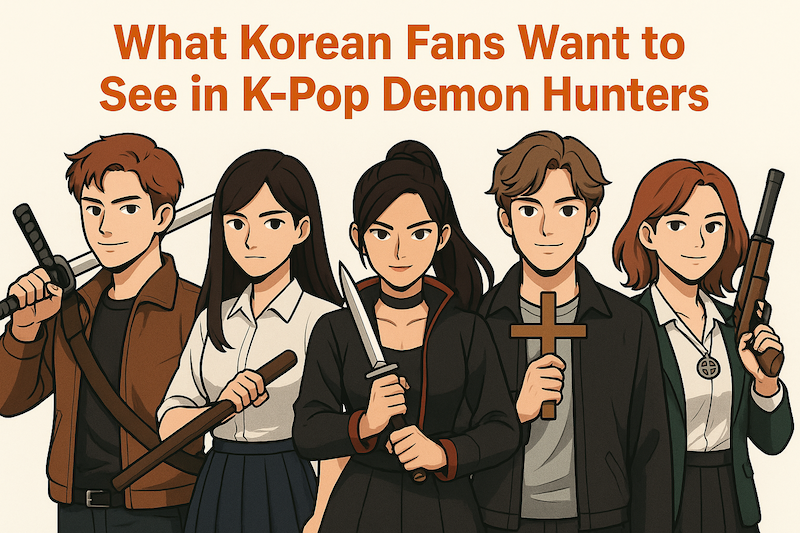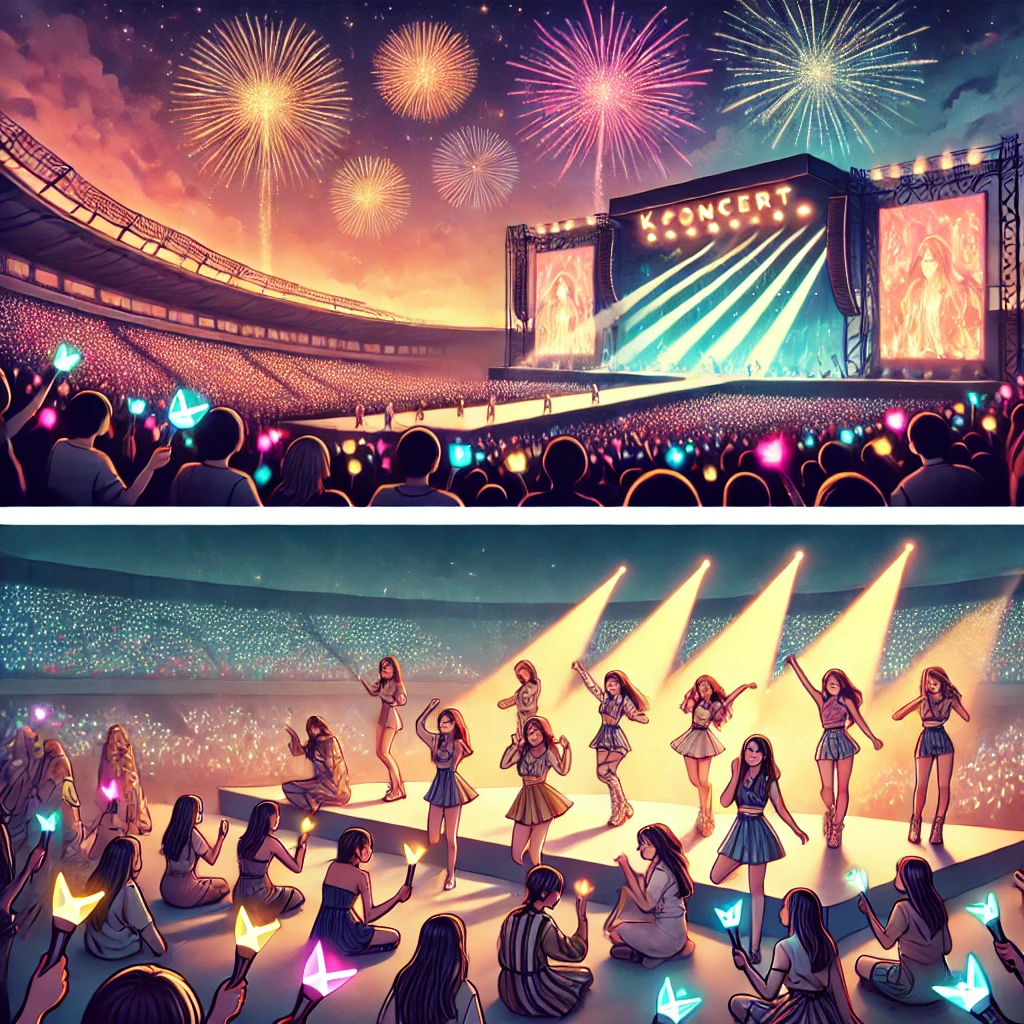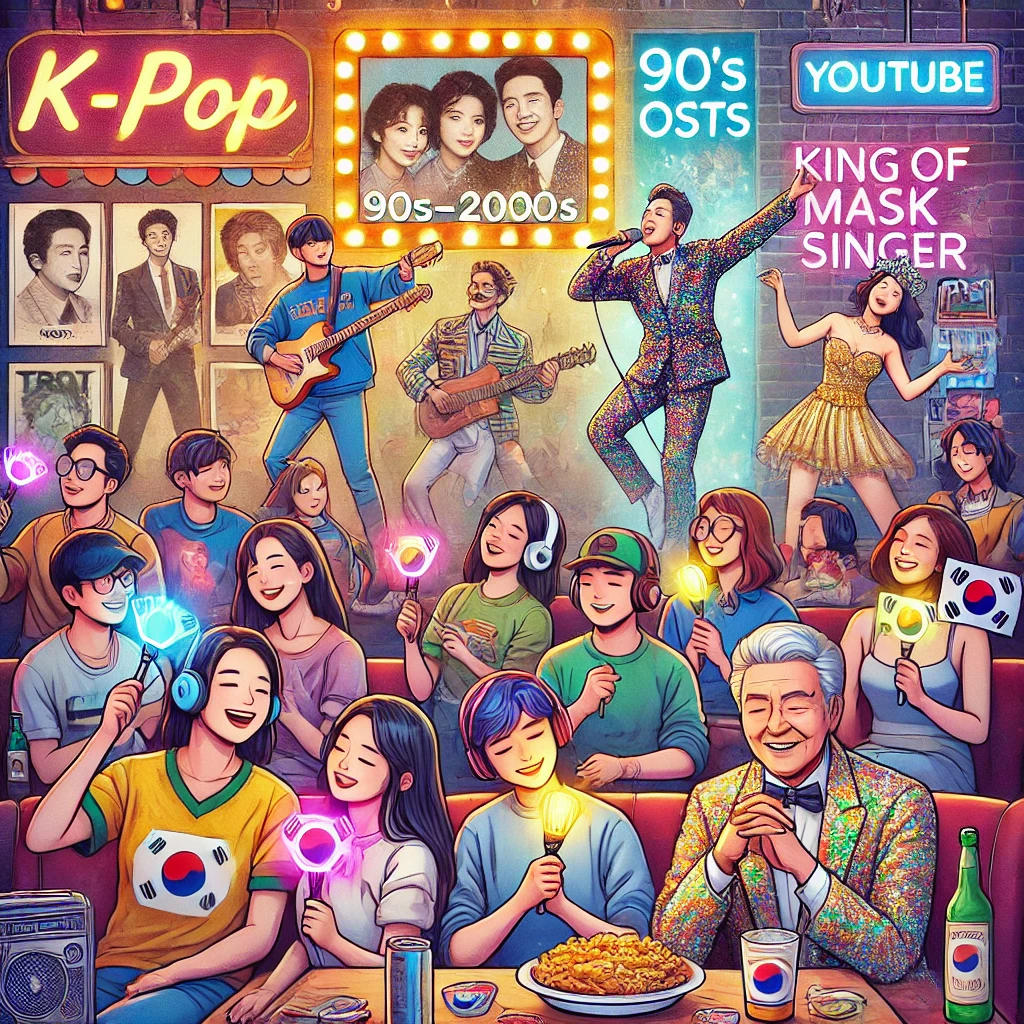Introduction: Why Culture Matters in K-POP Demon Hunters
When international fans watch K-POP Demon Hunters, the first thing they notice is the thrilling mix of high-energy music, stylish choreography, and action-packed storytelling. But beneath the surface lies a deeper layer — the unique cultural DNA of Korea.
Much of what makes the series fascinating comes from Korean traditions, myths, and unspoken cultural codes that may not be immediately clear to non-Korean viewers. For a global audience, understanding these hidden references adds depth to the story, makes character motivations more meaningful, and enriches the overall viewing experience.
This guide will help you decode the Korean cultural references in K-POP Demon Hunters: from ancient mythology to modern etiquette, from symbolic costumes to the role of K-pop itself. By the end, you’ll see why Korean fans watch with a knowing smile — and why understanding these details will bring you closer to the heart of the series.
1. Korean Mythology and Folklore in K-POP Demon Hunters
The Concept of “Gwisin” (귀신) – Ghosts and Spirits
One of the recurring themes in K-POP Demon Hunters is the battle with supernatural forces. The concept of “gwisin” (ghosts) comes from deep Korean folklore. Unlike Western ghosts, Korean gwisin are often portrayed as restless spirits tied to unresolved grudges. Their presence reflects not just horror, but also cultural values around filial duty, justice, and balance.
Understanding this gives extra weight to scenes where characters confront demons — it’s not just fantasy, it’s a nod to centuries-old Korean beliefs about life, death, and the afterlife.
The Tiger (호랑이) Symbolism
If you spot tiger imagery, you’re seeing one of Korea’s strongest traditional symbols. Tigers represent strength, protection, and Korean identity. In Korean art, they are both feared and revered. When characters in K-POP Demon Hunters channel tiger-like qualities, it symbolizes courage and the protection of the community.
Shamanism and “Mudang” Rituals
Some fight scenes or spiritual moments borrow imagery from Korean shamanism. The “mudang” (female shamans) traditionally perform exorcisms and healing rituals. Viewers unfamiliar with this may think it’s just dramatic flair, but for Koreans, it’s a nod to centuries of spiritual practices that still exist today.
2. Fashion and Costumes: More Than Just Style
Hanbok (한복) Inspirations
At first glance, costumes may look like futuristic K-pop stage outfits. But look closely: you may see elements inspired by hanbok, Korea’s traditional clothing. Flowing sleeves, layered skirts, and ribbon details often appear in stylized modern forms.
For Korean viewers, these visual cues signal a blending of heritage and modern pop culture — showing that even while fighting demons, the characters carry their cultural identity with pride.
Color Symbolism
Colors hold meaning in Korean tradition:
- Red → Life, passion, but also protection against evil spirits.
- White → Purity and mourning (Korea is historically called the “white-clad nation”).
- Black → Authority, power, and the unknown.
When a character appears in a certain color scheme, Korean viewers instantly pick up on these layers of meaning. For international fans, learning this can add extra excitement to interpreting costume design.

3. Korean Etiquette and Social Norms on Screen
Hierarchy and Respect
Watch how characters speak to each other. In Korean, language changes depending on hierarchy and respect. Even when translated into English subtitles, you may notice characters bowing, avoiding eye contact, or speaking differently depending on age and social rank.
This reflects Confucian values that still shape Korean society today — respect for elders, loyalty to leaders, and obligation to peers. When a younger character defies someone older, it’s not just personal rebellion — it’s breaking a deeply cultural expectation.
Group over Individual
In many scenes, teamwork is emphasized. Unlike Western heroes who often “go solo,” Korean characters often prioritize group harmony and collective survival. This mirrors real-life cultural values where community and family often outweigh individual desires.
4. K-pop References Embedded in Storytelling
K-POP Demon Hunters doesn’t just borrow the “K-pop” label for branding. It weaves in actual K-pop culture and industry references:
- Training system: Characters undergo intense physical and mental preparation, echoing how K-pop idols train for years.
- Fandom culture: The loyalty and power of fans are subtly referenced, showing how collective energy can be both empowering and dangerous.
- Stage performance aesthetics: Many battle scenes resemble music video choreography, a nod to the fact that Korean pop culture thrives on visual performance as much as sound.
For foreigners, this may look like flashy action. For Koreans, it’s also a commentary on the idol system and the pressures behind fame.
5. Locations and Settings: Everyday Korea on Screen
While many blogs cover filming locations, what matters culturally is how spaces are used:
- School settings: Korea places heavy emphasis on education, and schools often symbolize the struggles of youth, societal pressure, and generational conflict.
- Alleyways and rooftops: Commonly featured in dramas and films, these represent intimacy, secrecy, and personal reflection.
- Temples and shrines: These show Korea’s religious duality — a mix of Buddhism, Confucian values, and shamanism.
To foreign fans, these are just “cool backdrops.” To Koreans, they carry layered social and emotional meanings.
6. Disaster Preparedness and Community Spirit
In K-POP Demon Hunters, group survival against chaos mirrors Korea’s real-life history of overcoming crises — from war to natural disasters. The collective emergency drills seen in schools or communities reflect Korea’s disaster resilience mindset.
Foreigners might be surprised to know that Koreans regularly receive emergency text alerts on their phones — something echoed in the drama’s alert systems.
7. Language Nuances and Hidden Humor
Subtitles can only capture so much. Korean dialogue often carries double meanings, wordplay, and cultural idioms. For example:
- A demon called a “gwisin” might also be referred to in slang terms that resonate differently for locals.
- Honorifics like “-ssi” or “-nim” indicate respect that isn’t always translated.
By explaining these to foreign readers, blogs can bridge the gap between literal translation and cultural intention.
8. Why This Matters for Global Fans
Foreigners love K-POP Demon Hunters for its spectacle. But to truly connect with Korean storytelling, it’s important to understand the culture beneath the action. Recognizing hanbok details, gwisin mythology, or the power of hierarchy transforms a casual viewing into a cultural learning experience.
It also deepens global appreciation of Korean soft power — showing that K-pop isn’t just music, but a cultural wave that carries language, history, and values worldwide.
Conclusion: Watching with Cultural Lenses
K-POP Demon Hunters is more than flashy battles and catchy soundtracks. It’s a cultural showcase wrapped in entertainment. For Koreans, these details are second nature. For foreigners, they are hidden gems waiting to be discovered.
By learning about Korean mythology, etiquette, costumes, and K-pop references, international fans can engage more meaningfully with the story. It transforms the show from just another trendy release into a bridge between Korean culture and the global audience.
So next time you stream K-POP Demon Hunters, watch not only with your eyes, but also with cultural curiosity. You’ll find a richer story waiting beneath the surface.

